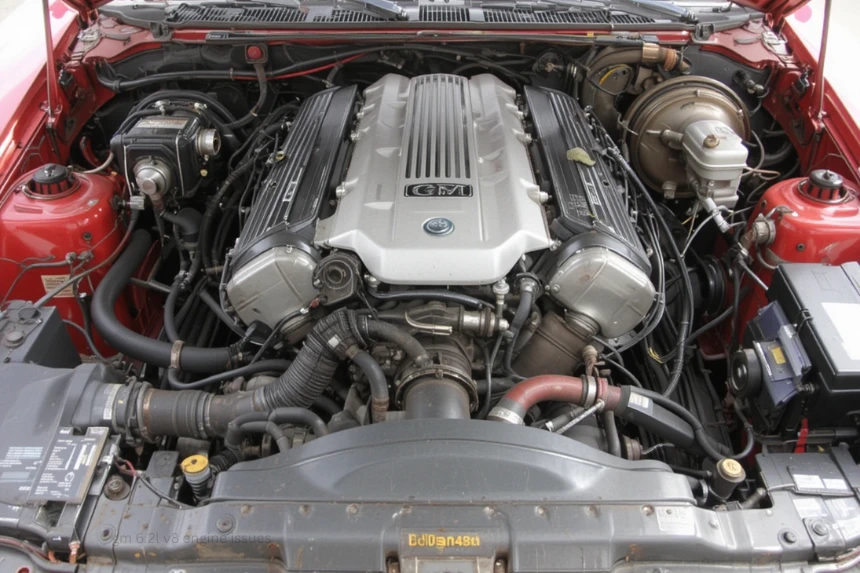The GM 6.2L V8 engine is renowned for its power, durability, and performance, making it a popular choice among truck and SUV enthusiasts. It is not impervious to problems, though, like any intricate mechanism. Owners and mechanics alike need to be aware of common problems that can arise with the GM 6.2L V8 engine to ensure proper maintenance and timely repairs. In this article, we will explore the most frequent GM 6.2L V8 engine issues, their causes, symptoms, and potential solutions.
Overview of the GM 6.2L V8 Engine
The GM 6.2L V8 engine, also known as the L86 or LS3 in different contexts, has been celebrated for its impressive horsepower and torque. It powers various GM trucks, SUVs, and performance vehicles. This engine, which combines cutting-edge technology like variable valve timing and direct fuel injection, is built for robustness and dependability.Despite its robust engineering, some owners have experienced particular problems over time, especially as mileage increases.
Common GM 6.2L V8 Engine Issues
1. Timing Chain Problems
One of the most reported issues with the GM 6.2L V8 engine is timing chain problems. Engine timing problems can result from the timing chain and related parts stretching or coming loose over time. Symptoms include rattling noises during startup or acceleration, rough idling, and potential misfires.
Causes:
- Long-term use wears down the timing chain and causes slack.
- Inadequate lubrication due to improper maintenance or oil changes.
- Manufacturing defects in certain models or batches.
Solution: The timing chain must be inspected on a regular basis.In cases of significant slack or wear, replacing the timing chain and associated guides is recommended. This repair is intensive and might require engine disassembly, so professional servicing is advised.
2. Carbon Build-Up and Valve Deposits
Carbon accumulation in the intake valves is a common issue, especially in direct-injected engines like the GM 6.2L V8. Carbon buildup over time may result in rough running, less ventilation, and lower fuel economy.
Symptoms:
- Rough idling or stumbling during acceleration.
- Loss of power and poor throttle response.
- Increased exhaust emissions.
Causes:
- Short trips and insufficient engine heating cycles, which do not allow carbon to burn off naturally.
- Use of low-quality fuel.
- Inadequate maintenance routines.
Solution: Decarbonizing the engine through professional cleaning can restore performance. Regular maintenance, full-throttle runs, and fuel system additives can help prevent excessive build-up.
3. Valve Train Noise and Failure
Owners have reported issues with valve train components, including noisy operation and eventual failure. This can be caused by worn rocker arms, lifter failure, or timing chain tensioner problems.
Symptoms:
- Ticking or tapping sounds from the engine.
- Loss of power or misfiring.
- Check engine light activation.
Causes:
- Prolonged use under high-stress conditions.
- Insufficient lubrication leading to wear.
- Manufacturing defects in valve train components.
Solution: Regular valve clearance inspections and timely replacement of worn parts are vital. Using high-quality oil and fluids also supports valve train longevity.
4. Oil Consumption and Leaks
High oil consumption is a common concern with the GM 6.2L V8 engine, often accompanied by oil leaks. This may result from worn piston rings, valve seals, or gasket failures.
Symptoms:
- Frequent need to top off engine oil.
- Visible oil spots under the vehicle.
- Smoke from exhaust indicating burning oil.
Causes:
- Engine wear over time.
- Poor maintenance practices.
- Defective gaskets and seals.
Solution: Conducting compression tests and inspecting seals can identify the source of leaks and consumption. In order to restore appropriate oil retention, worn rings or seals must be replaced.
5. Spark Plug and Ignition Coil Issues
Misfires and difficulty starting are often linked to faulty spark plugs or ignition coils. The GM 6.2L V8’s high performance need dependable ignition parts.
Symptoms:
- Rough running or misfires.
- Decreased power and fuel economy.
- Check engine light with codes related to ignition.
Causes:
- Wear and fouling of spark plugs.
- Ignition coil deterioration over time.
Solution: Replacing spark plugs and coils at recommended intervals ensures consistent ignition performance.
Maintenance Tips to Prevent GM 6.2L V8 Engine Issues
Regular Oil Changes: Use high-quality oil and adhere to the manufacturer’s schedule. Proper lubrication is crucial for engine longevity.
Routine Inspections: Check for wear on a regular basis in the gaskets, valve train, and timing chain.
Engine Decarbonizing: Perform carbon cleaning treatments if noticeable performance drops occur.
Timely Repairs: Address any warning signs early to avoid more expensive repairs later.
Use Quality Fuel: High-octane fuel reduces carbon buildup and improves overall engine health.
Conclusion
While the GM 6.2L V8 engine offers impressive power and durability, owners need to be aware of its potential issues. Common problems such as timing chain wear, carbon build-up, valve train failure, oil consumption, and ignition component failures can be managed effectively with regular maintenance and prompt repairs. Understanding these issues enables owners to enjoy the full benefits of their vehicle and prolong the engine’s lifespan. Proper care, routine inspections, and professional servicing are the keys to keeping the GM 6.2L V8 engine running smoothly for years to come.



